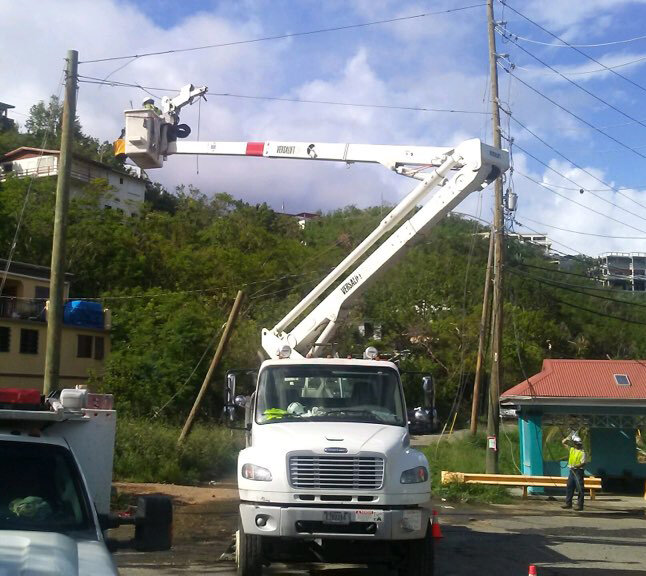Bucket Trucks
Date Posted: 09/23/2016
According to Occupational Safety and Health Administration (OSHA) statistics, some 30 workers die each year from using aerial lifts.
IMPORTANT: Only trained and authorized persons are allowed to operate an aerial lift. The authorized person must conduct a pre-start inspection prior to each work shift to verify that the equipment and all of its components are in safe operating condition.
This discussion will outline some general safety rules for bucket trucks.
General Rules
Personal fall arrest systems must be used when using bucket trucks.
Ensure that access gates or openings are closed.
Do not climb on or lean over guardrails or handrails.
Do not use planks, ladders, or other devices as a working position.
Do not belt-off to adjacent structures or poles while in the bucket.
Do not exceed the load-capacity limits.
Do not use the aerial lift as a crane.
Do not carry objects larger than the platform.
Do not operate lower level controls unless permission is obtained from the worker(s) in the lift (except in emergencies).
Do not operate an aerial lift in high winds above those recommended by the manufacturer.
Do not override hydraulic, mechanical, or electrical safety devices.
Be aware of overhead clearance and overhead objects, including ceiling.
Do not position aerial lifts between overhead hazards if possible.
Ensure that the power utility or power line workers de-energize power lines in the vicinity of the work.
You must maintain a clearance of at least 10 feet from overhead high voltage power lines.
Do not use the bucket to push objects.
Specific Rules for Bucket Trucks
Ensure that the boom is properly cradled and the outriggers are in the stowed position before moving the truck.
In order to utilize the truck for highway travel, all elevating structures must be secured in the lower traveling position by the locking device on top of the truck cab and the manually operated device at the base of the ladder.
The brakes shall be set and when outriggers are used, they shall be positioned on pads or a solid surface. Wheel chocks shall be placed before using the bucket on an incline.
A bucket truck shall not be moved when the boom is elevated in a working position with workers in the basket.
Presenter tips
Pre-read the Toolbox Talk. Your comfort level and confidence will be higher if you know your topic.
Discuss related tasks, work areas or events that make the Toolbox Talk relevant to your job site.
Involve the workers by asking questions and input that drives discussion.
Questions for Discussion
What are some things to consider when setting up the outriggers?
What times would be appropriate to use delineators or caution tape?


